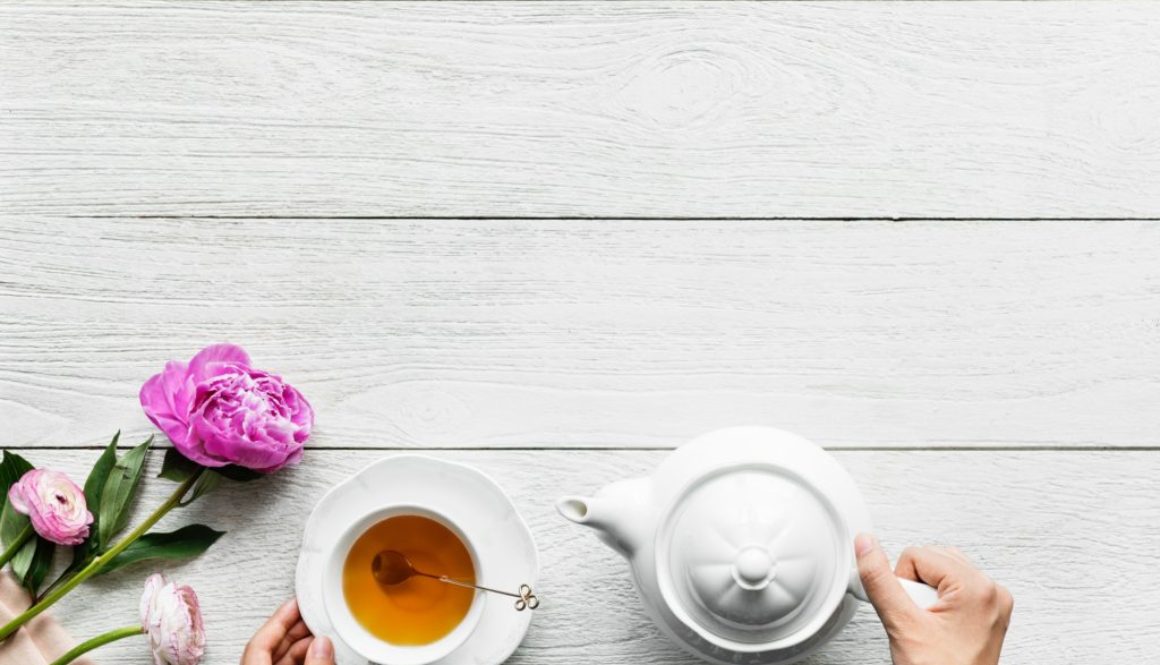Mindfulness – Tea Meditation
Mindfulness is an ancient eastern practice, essentially based on paying attention to the present moment, intentionally, without judgement. It encourages us to notice.
This might sound incredibly easy, but actually when you think about it, it’s completely different to how we normally operate. Look at your watch or a clock ticking, pay attention to it. How long does it take before you start thinking about what you’re going to have for dinner? Or how much work you have to do? Our minds naturally wander and lose focus on the task at hand.
Mindfulness is about practising the art of focusing our attention, enabling us to exert more control over what we focus on rather than allowing our mind to wander to things that may be distressing for us. It can be used as a great relaxation tool, and can help us to manage stress, anxiety and low mood.
Have you ever been driving somewhere, arrived at your destination and completely forgotten the journey? We often drive along routes we know well in autopilot, and we do this on differing levels throughout our day to day life. When in this mode, we find ourselves open to falling into old habits quite easily, being consumed by worry and negative thoughts. By using the practice of Mindfulness and increasing our awareness of our bodily sensations, thoughts and feelings we experience a greater freedom and sense of control. We can notice when our thoughts are wandering into the familiar territory and choose to pull it back and focus on the here and now, or more positive thoughts.
So how can you practice mindfulness? You can apply the idea of mindfulness to pretty much any task but my favourite exercise to offer for beginners is the Mindfulness Tea Meditation. As its name would suggest, this meditation focuses on the task of making a cup of tea (or coffee, or hot chocolate or whatever your hot beverage of choice is!), thus it is an exercise that you could practice a few times a day whether you are at home or at work. Should you find this exercise helpful, you can apply the practice to anything, such as brushing your teeth, taking a walk in the park, or even listening to a piece of music. Paying attention for the 5-10 minutes it takes to make a cup of tea gives us a brief period of relaxation, helping us to switch off from our mind clutter and get back to the rest of our day with more peace and clarity.
I really like the following practice of Tea Meditation taken from https://www.mindful.org/mindful-cup-tea/
- Pay attention to the sound of the water heating and boiling in the kettle. Hear its bubbling and gurgling. Can you see wisps of steam coming from the spout? Does the kettle subtly shake from the movement of the water inside? Be open to your senses, rather than try to analyse what’s happening.
- Notice the feeling of being in your environment: your bottom’s contact with the chair or the floor if you’re sitting down; the weight of your feet on the ground if you’re standing.
- Pouring the tea, watch the colour of the water change as it meets the teabag. Be interested in the transformation from clear water to tea, and the tinkling of liquid as it fills the cup. When your mind wanders into thought, as it probably will, gently return your attention to sensing.
- Lifting the teabag out with a spoon, feel the touch of the handle against your fingers, and the weight of the bag dropping away as you tip it into the bin. Let yourself hear any related sounds, such as the opening and closing of the bin lid. Notice any tendency to do this on autopilot and come back to present-moment sensing when you find you’ve drifted to distraction.
- If you take milk and sugar, be interested in how you feel as you reach for and add these ingredients to the brew. Do you really want them? How do you know?
- Notice the warming of the cup that contains the hot liquid. How do your hands feel as you hold it?
- Now, bring the cup to your lips. Be interested in how your hand and arm know how to move in this direction without you having to tell them consciously what to do.
- Take a sip of tea. Rather than gulping it down, see if you can let the taste tickle your tongue. Perhaps gently move the liquid around your mouth. Savor the taste—is it pleasant? Or perhaps you’d prefer it stronger or weaker? You don’t have to do anything about it (unless you choose to). Just be aware of your sensations and the liking or disliking of them. If there are thoughts, let them enter into and then pass through your mind without following them. Try to stay with the tasting. Notice without judgement any desire to rush the drinking, and any impatience that comes.
- When you decide to swallow the tea, notice how that decision is made. Is it a conscious choice, or does it happen automatically? Stay present to the swallowing, the reflex movements in the back of the mouth and the throat, the trickle of liquid down into the stomach. How does it feel to be swallowing?
- Notice how the liquid seems to disappear. Is there a point when the tea stops being separate from you? When and how do you recognize that moment?
- Pause now, noticing any feelings of irritation, or thoughts such as: Hurry up, I’ve got better things to do. Or perhaps a sense of peace or stillness enters you. If so, where do you feel it? Is it changing from moment to moment, or staying the same? Maybe there’s something else going on in your mind and body, perhaps unrelated to the tea-drinking, pulling you into thoughts of the past or the future. If so, just notice it. Whatever comes up in your experience is okay from the perspective of meditation—there’s no right or wrong thing to notice. Bring gentle awareness to whatever emerges. Becoming conscious of how much the mind wanders is a sign of growing awareness.
- Take a look around you, opening your eyes to your surroundings without buying into evaluations about them. Just be aware of any thoughts or feelings that come up.
- Now, return your attention to the cup of tea in your hand. (Has the temperature dropped?) Watch as you decide when to begin the process of taking another sip. Return to step seven, and continue drinking the tea until the cup is empty, or you decide to stop drinking. If the latter, be curious about what is prompting that decision. Has the tea gone cold, has the taste changed, is there an impulse to get on with your next activity? (If the latter, what does that feel like? Is there a place in your body where you feel it most strongly?) Whatever you choose to do in each moment, try to watch the experience from an engaged observer’s perspective.
You could also check out my other post for an alternative relaxation exercise here: http://www.morrellcounselling.com/2018/07/relaxation-exercise-part-1/

